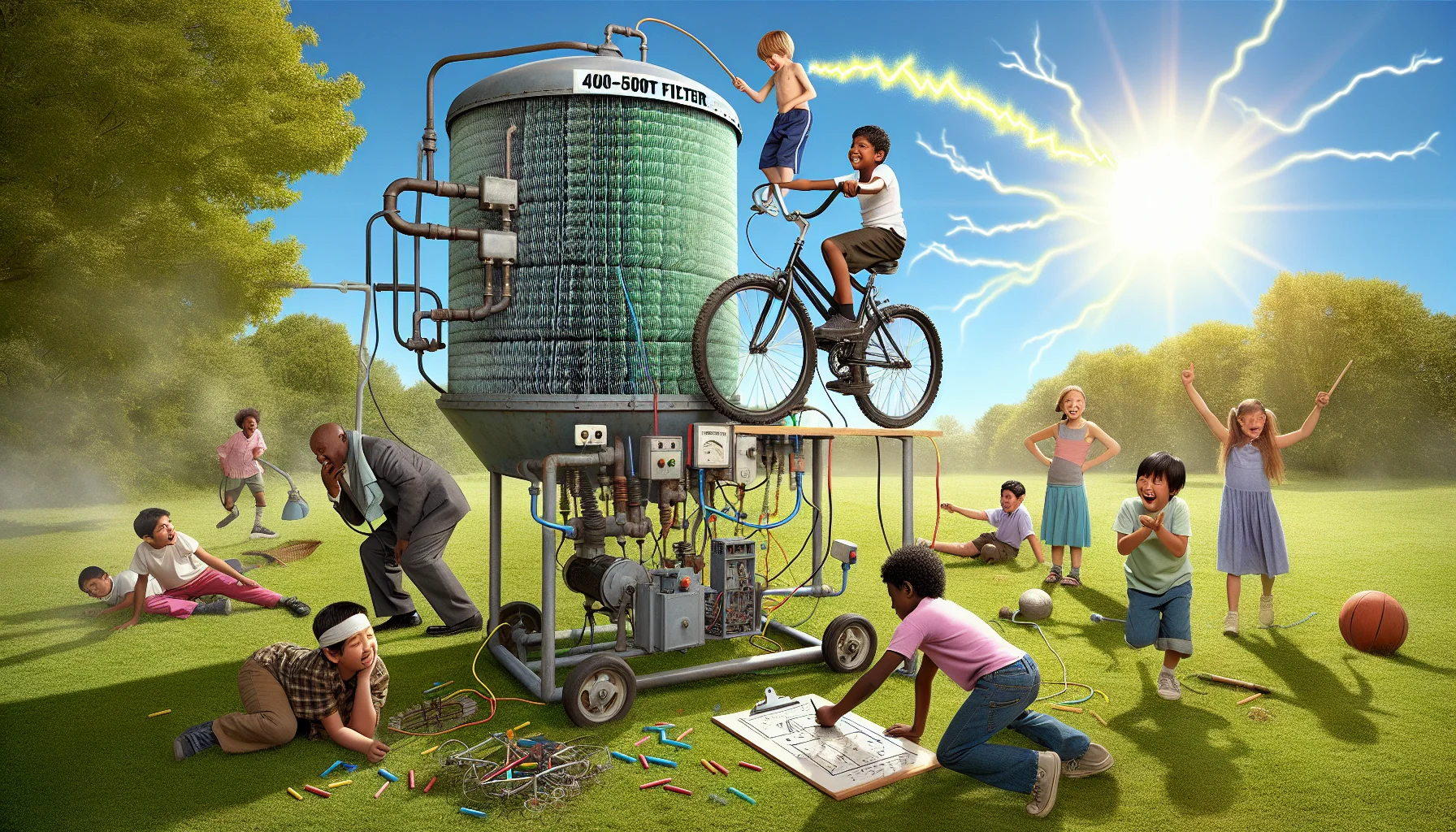4000-5000 Watt Filter Quiz
Test Your Knowledge
Question of
Understanding 4000-5000 Watt Filters for Electricity Generation
Filters in the range of 4000-5000 watts play a crucial role in the generation of electricity, especially in systems that require a high degree of energy efficiency and reliability. These filters are designed to manage and stabilize the flow of electricity, ensuring that the output remains consistent and free from any form of electrical noise or interference that could potentially harm the equipment or reduce its efficiency. By filtering out unwanted fluctuations and surges in power, these devices help in maintaining the optimal performance of generators and other electrical equipment, thus extending their lifespan and reducing the need for frequent maintenance. Their importance cannot be understated, as they directly contribute to the safety, efficiency, and reliability of electricity generation systems.
How 4000-5000 Watt Filters Work
4000-5000 watt filters play a crucial role in electricity generation systems by managing and refining the electrical power output. These filters operate by selectively allowing electrical current of certain frequencies to pass through while blocking or attenuating unwanted frequencies. Essentially, they clean the power supply, ensuring that the electrical devices receive a stable and consistent voltage. This process not only protects the devices connected to the power supply but also improves efficiency by reducing power loss and minimizing the risk of power surges. The mechanism involves the use of components like capacitors and inductors, which store and release energy, respectively, to smooth out the power waveform. This results in a more reliable and higher quality power supply, making these filters an integral part of modern electricity generation systems.
Types of 4000-5000 Watt Filters
- Low-Pass Filters: These filters are designed to allow signals with a frequency lower than a certain cutoff frequency to pass through while attenuating signals with frequencies higher than the cutoff. They are essential in reducing high-frequency noise in power supplies.
- High-Pass Filters: Opposite to low-pass filters, high-pass filters are used to allow signals with frequencies higher than a certain cutoff frequency to pass and attenuate signals with lower frequencies. They are useful in applications where low-frequency noise needs to be eliminated.
- Band-Pass Filters: These filters allow signals within a certain frequency range to pass through while attenuating signals outside this range. They are crucial in applications where a specific frequency band is of interest, such as in certain communication systems.
- Band-Stop Filters: Also known as notch filters, they are used to block signals within a specific frequency range while allowing signals outside this range to pass. This is particularly useful in eliminating unwanted frequencies or interference.
- EMI Filters: Electromagnetic Interference (EMI) filters are designed to suppress conducted interference in a power line. They are critical in preventing electromagnetic noise from affecting sensitive equipment in electricity generation and distribution systems.
Benefits of Using 4000-5000 Watt Filters in Power Systems
Incorporating 4000-5000 watt filters into electricity generation systems offers a myriad of advantages that significantly enhance performance and reliability. Firstly, these high-capacity filters are instrumental in reducing electrical noise, which is essential for the stable operation of sensitive electronic equipment. By mitigating interference, they ensure a cleaner power supply, which translates to improved efficiency and longer lifespan of connected devices. Additionally, these filters play a crucial role in protecting power systems from voltage spikes and surges, thereby reducing the risk of costly damages and downtime. The use of 4000-5000 watt filters also contributes to energy savings by optimizing the power factor, which is a measure of how effectively electrical power is converted into useful work output. This not only leads to a reduction in electricity bills but also helps in minimizing the environmental impact by reducing the demand on electricity generation and distribution networks. Overall, the integration of these filters into power systems is a forward-thinking approach that promises enhanced performance, protection, and sustainability.
Installation and Maintenance of 4000-5000 Watt Filters
To ensure optimal performance in electricity generation, it is crucial to properly install and maintain 4000-5000 watt filters. Begin the installation by securely attaching the filter to the generator, ensuring all connections are tight and secure to prevent any power loss. It's important to follow the manufacturer's guidelines for wiring and placement to avoid overheating and to ensure efficient operation. Regular maintenance should include cleaning or replacing the filter elements as recommended by the manufacturer, usually every 6 to 12 months depending on usage. Additionally, inspect the filter housing and seals for any signs of wear or damage that could affect performance. By adhering to these guidelines, you can ensure your 4000-5000 watt filters operate at peak efficiency, contributing to the reliable generation of electricity.
Case Studies: Success Stories with 4000-5000 Watt Filters
- GreenTech Solutions - Implemented a 4500-watt filter in their solar panel array, increasing efficiency by 20%.
- HydroFlow Projects - Utilized a 4000-watt filter in their hydroelectric plant, resulting in a 15% increase in power output.
- WindMax Innovations - Integrated a 5000-watt filter into their wind turbine system, enhancing energy production by 25%.
- EcoPower Generators - Adopted a 4200-watt filter for their biomass power station, which improved power generation efficiency by 30%.
- Urban Renewables - Employed a 4800-watt filter in a city-wide renewable energy project, significantly reducing energy loss.
Choosing the Right 4000-5000 Watt Filter for Your Needs
When selecting a 4000-5000 watt filter for your electricity generation needs, it's crucial to consider several key factors to ensure you choose the most suitable option. First, assess the efficiency of the filter. Look for options that offer high efficiency in converting energy, as this will directly impact your energy consumption and costs. Secondly, consider the capacity of the filter. Make sure it is capable of handling your expected energy load without overloading or underperforming. Lastly, compatibility is essential. Ensure the filter you choose is compatible with your existing equipment to avoid any integration issues. By taking these considerations into account, you can select a filter that meets your specific requirements and provides reliable performance.












